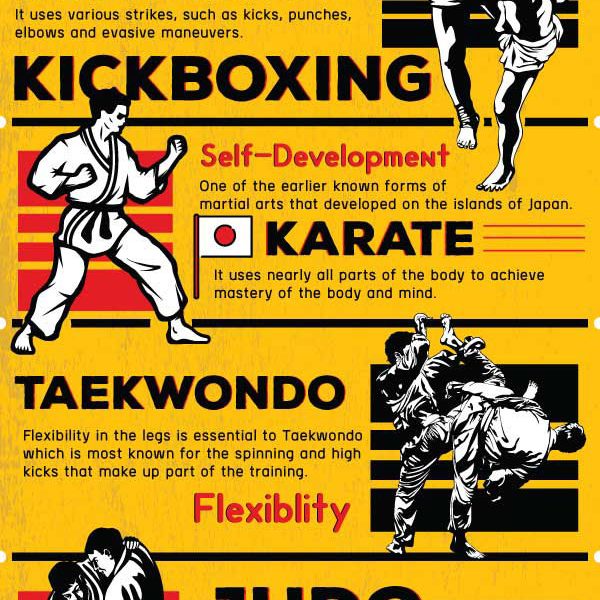Untangling The Mystery Of Several Martial Arts Self-Controls: An Overview To Karate, Taekwondo, And A Lot More
Untangling The Mystery Of Several Martial Arts Self-Controls: An Overview To Karate, Taekwondo, And A Lot More
Blog Article
Created By- east brunswick karate
Are you tired of sensation bewildered by the vast world of fighting styles? With a lot of styles to choose from, it can be simple to obtain lost in a sea of strikes, kicks, and mystical names. But worry not!
This conversation will debunk the different fighting styles designs, taking you on a trip from the effective strikes of Karate to the dynamic kicks of Taekwondo. Prepare yourself to reveal the beginnings, methods, and ideologies behind these ancient art types.
So, tighten your belt and prepare to embark on an enlightening exploration into the fascinating globe of fighting styles.
Origins of Martial Arts Styles
The beginnings of fighting styles styles can be mapped back to old civilizations and their demand for protection and battle techniques. Throughout history, various cultures developed their very own distinct methods of fighting, each with its very own set of techniques and approaches.
In China, for instance, fighting styles styles such as Martial art and Tai Chi were established as a way of self-defense and improving physical and mental wellness.
In Japan, the samurai warriors produced designs like Martial arts and Judo, focusing on technique, accuracy, and mastery of the body.
Likewise, in Korea, Taekwondo emerged as a martial art highlighting high kicks, fast movements, and psychological fortitude.
These very early civilizations laid the foundation for the varied selection of martial arts styles that exist today, each with its very own rich background and social significance.
Techniques and Training Methods
To understand martial arts designs, specialists should discover different methods and training techniques.
Methods are the particular movements and activities used in combat, such as strikes, kicks, tosses, and blocks. Different martial arts designs have their own unique collection of strategies that practitioners must master via rigorous training.
Educating methods differ depending on the design, however they typically entail a mix of physical conditioning, drills, competing, and kinds.
Physical conditioning is essential to construct strength, versatility, and endurance. Drills assist experts refine their methods and improve their speed and accuracy.
Competing enables professionals to exercise their techniques in a regulated, sensible environment. Types, additionally called kata, are ironclad sequences of activities that aid specialists create muscular tissue memory and focus.
Approaches and Concepts
Exploring the approaches and principles of martial arts styles can supply you with a much deeper understanding of your chosen technique. Each martial art has its own special philosophy and set of directing concepts that form the method it's exercised.
For instance, Martial arts stresses self-control, respect, and self-constraint. It instructs experts to focus their minds and bodies, allowing them to protect themselves while keeping a feeling of internal tranquility.
On the other hand, Taekwondo positions a strong focus on speed, dexterity, and adaptability. Its concepts are rooted in the tenets of courtesy, integrity, willpower, self-constraint, and unbeatable spirit.
Verdict
Since you've explored the origins, techniques, and ideologies of numerous martial arts designs, you have a much deeper understanding of these old disciplines.
Think of a young karate student, practicing with steadfast resolution and focus, breaking through boards with a powerful punch.
https://news.abplive.com/trending/nagaland-minister-temjen-imna-along-turns-sumo-wrestler-among-karate-kids-wins-hearts-online-1589361 and strength required to understand a martial art, advising us that with self-control and willpower, anything is feasible.
